Patella luxation is a really common pathology, with certain breeds more prone than others, such as Pomeranian, Yorkshire Terrier, Chihuahua, French Bulldog, Cavalier King Charles Spaniel, Bichon Frise, Pug, West Highland Terrier, Jack Russell Terrier, Shit-tzu, and Staffordshire Bull Terrier (Di Dona et al. 2018; Boge et al. 2019). However it can also be caused by an upright hindlimb conformation due to less tension in the patella ligament (Di Dona et al. 2018).
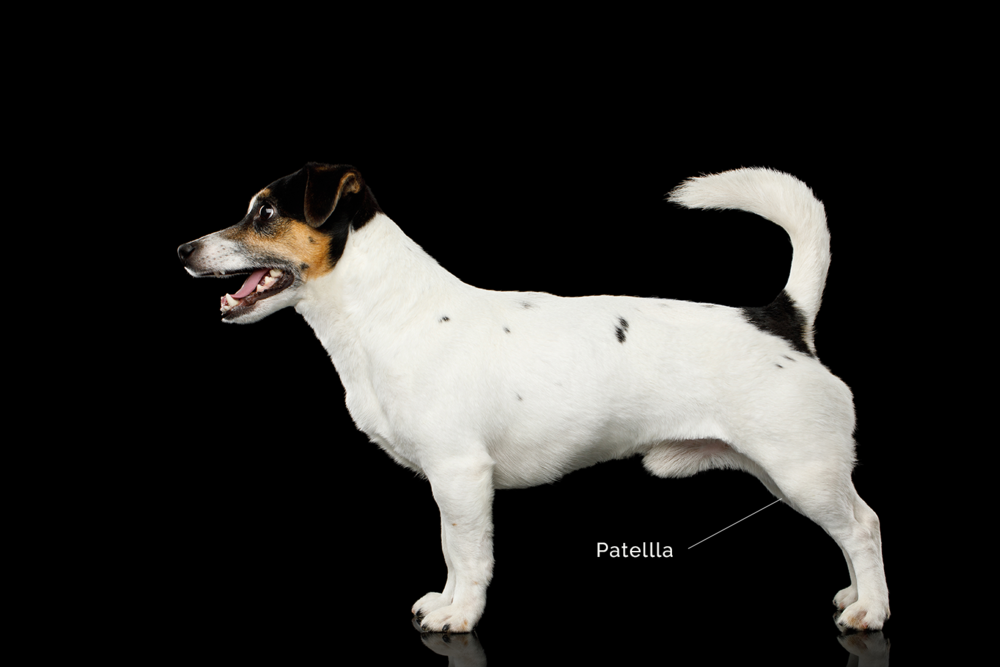
What is it?
It is essentially where the patella (knee cap) ligament does not glide effectively in the joint, and “slips” out of its groove, causing the effected hindlimb to get “stuck” in flexion for a few steps. There are different grades (1-4), with 1/2 often being managed conservatively, with signs more sporadic and can be missed in the blink of an eyes, and grades 3/4 often needing surgery, with signs more obvious. This often effects Jack Russel’s, with so many of the breed effected, people think it is normal!
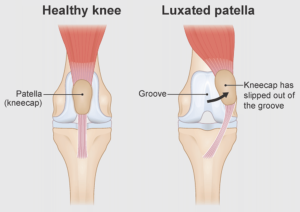
Long term luxation can cause compensatory mechanisms to occur, such as forward loading to reduce weight on a weak hindlimbs, back pain due to using “hip sway” to walk rather than lifting up through their hindlimb joints, and gradually, arthritis in the effect stifles from chronic dysfunction, and even in the forelimbs from chronic overloading!
What can be done?
There are some things that can be done…
1) you must see a vet for diagnosis, and for them to assess if surgery or conservative management is needed.
2) even if surgery is or isn’t used, physiotherapy can massively improve hindlimb strength, stifle (knee) function, and therefore prevent luxation and arthritis later in life, as-well-as reduce compensatory pain.
Physiotherapy
Physiotherapy will use techniques such as massage and thermal therapy to reduce pain and improve muscle function. And exercises to strengthen the whole body.
Slow leading walking for at least 5-10mins at the start of every walk is perfect to build muscle. The walk is a 4 beat gait with no suspension phase. That means your dog has to use concentric (shortening) and eccentric (lengthening) muscle contractions for every stride to produce movement compared to trot and canter where there is a suspension phase they can gain momentum through tendon “spring”. Therefore quadrupeds actually use more effort and gain more muscle when walking (Polet and Bertram, 2019).
Sit to stands improve coordination through neuromuscular control, and build hindlimb musculature when performed correctly with the limbs tucked under the hindlimb during the sit as shown in the image (Drum, 2010; Shaw, 2017), focussing on the hindlimbs and particularly the hip and stifle and their extensor muscles.
Also, pole work has been found to be incredibly effective at increasing flexion of all limb joints (except the shoulder), and extension of the stifle and carpus (knee), when used at hock height in walk and when completing a stepping rather than jumping movement (Holler et al 2010).

Therefore the above exercises are often the ones of choice, alongside some lower level exercises if needed to start slow after surgery, and higher level once strength has been built up!
Management
Management wise, raising feed bowls to keep the back straight and transfer weight back is a great way to prevent compensatory pain, and keeping movement in the sagittal (forwards and backwards plane), is vital to prevent joint torsion and pain before strength is built.
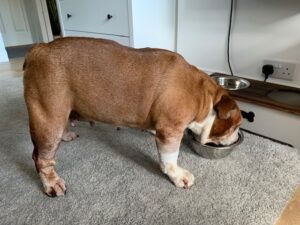
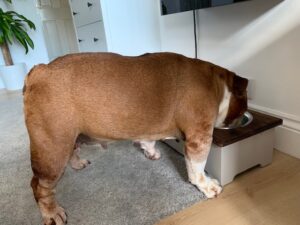
Take home message
This condition requires long term management, and will never be “cured” or “fixed”. As I have a dog with this condition, I understand all sides of this condition! With correct management, you can go from a dog with lots of postural issues due to pain and dysfunction, to a happy and healthy dog!
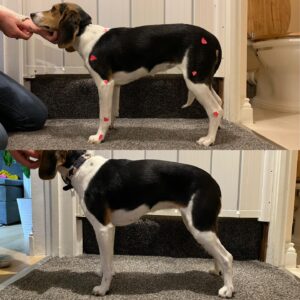
My dog Bea has this condition. I’ve had to work on her balance and strength to reduce back pain and her stifle offloading stance as noted in the top image through the forward loading and holding her hind limbs underneath her body more to open up her stifle angle.
But she is now higher in the forelimbs than the hind limbs, which is desirable as it prevents forward loading and injuries associated with excessive loading of the forelimbs like carpal (wrist) strain. Additionally this has made her back flat and level (although as she was slightly nervous in the bottom photo about why I was asking her to stand for a photo her back is slightly arched in anticipation!). And finally her hind limbs are now placed out behind her, with her point of buttock (a couple of inches below the base of the tail), is now level with the front of her back toes, which is desirable in dogs and encourage athletic ability due to a longer tibia and more angulated stifle (knee) (Edge-Hughes, 2012).
Therefore get in touch for physio queries 🙂

